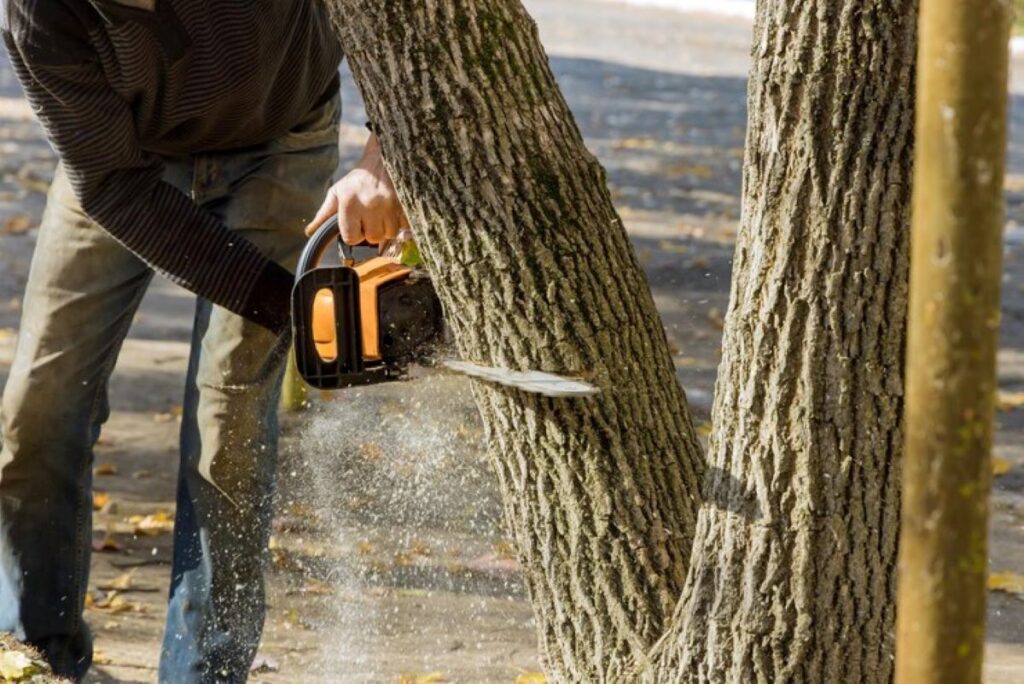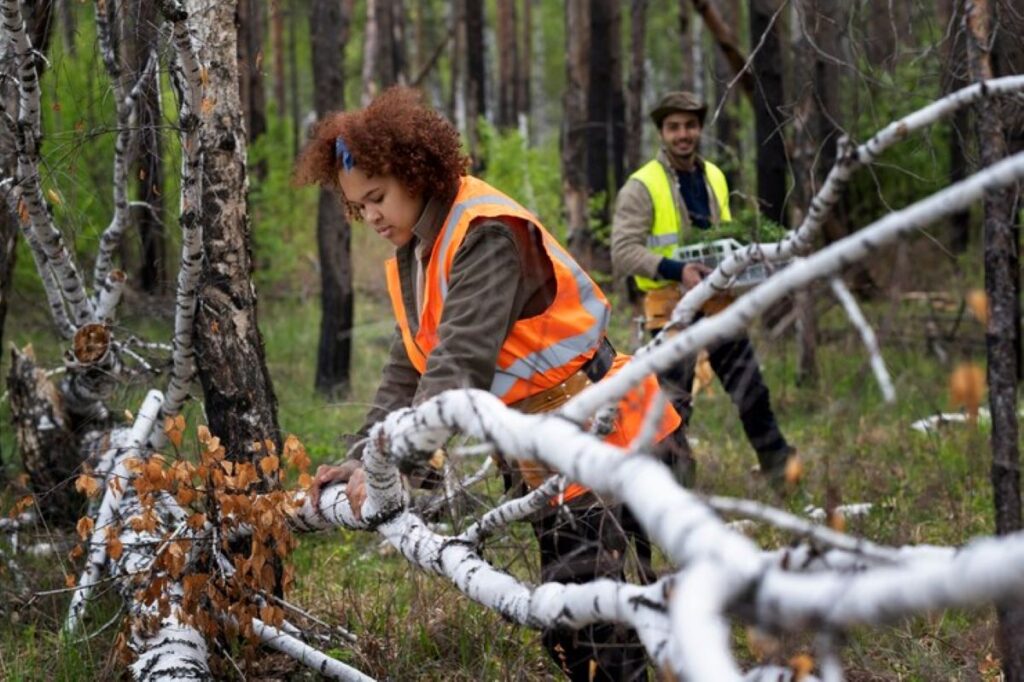When it comes to maintaining the health and aesthetics of your trees, finding reliable tree lopping services is crucial. Tree lopping involves trimming parts of a tree to achieve specific goals such as shaping, safety, and health. With many services available, understanding what to look for can help ensure that your trees are in capable hands.
Understanding Tree Lopping and Its Importance
Tree lopping is not just a matter of cutting branches randomly; it plays an essential role in the overall care of trees. It can improve a tree’s health by allowing better light penetration and air circulation, thus keeping the tree strong and vibrant. This practice is particularly crucial in densely populated areas where trees might compete for limited sunlight. By strategically lopping branches, tree care professionals can ensure that each tree receives the necessary light to thrive, promoting a healthier ecosystem.
Furthermore, proper lopping can prevent safety hazards. Dead or overhanging branches can become a liability, especially during storms. Regular maintenance through lopping minimizes risks associated with fallen branches and encourages better growth. In addition to enhancing safety, lopping can also help in maintaining the aesthetic value of your landscape. A well-shaped tree adds beauty to the environment, creating a pleasing visual effect that can increase property value.
What is Tree Lopping?
Tree lopping refers to the practice of cutting back branches and foliage from a tree, often with the purpose of enhancing its shape or health. This procedure is performed with specific tools and methods to make precise cuts that help the tree heal properly. It is important to note that lopping is not synonymous with tree topping, which can severely damage a tree by removing large sections of its canopy. Instead, lopping focuses on careful pruning that encourages growth while preserving the tree’s natural form.
Different species of trees require varying techniques for lopping to achieve optimal results. For example, hardwood trees may need different approaches compared to softwood species due to their unique growth patterns and structural characteristics. It’s essential to understand that lopping must be done judiciously to avoid harm to the tree. Unauthorized and heavy lopping can lead to tree stress and long-term damage. This is why consulting with a certified arborist is often recommended, as they can provide expert guidance tailored to the specific needs of each tree.
Why is Tree Lopping Necessary?
Tree lopping is necessary for multiple reasons, including improving the tree’s health and safety. Overgrown trees can block sunlight and hinder the growth of surrounding plants, while also posing risks in urban settings. In addition, trees that are not regularly maintained can become overburdened, making them more susceptible to pests and diseases. By lopping branches, you can help to create a more balanced structure that supports the tree’s overall vitality.
Moreover, lopping helps in promoting new growth. By removing certain branches, you encourage the tree to prioritize resources towards remaining limbs, resulting in a fuller and healthier crown. This practice can also stimulate flowering and fruit production in certain species, enhancing their ecological contributions. Furthermore, lopping can be a proactive measure to manage tree size and shape, ensuring that they remain suitable for their environment and do not encroach on power lines or buildings. This careful management is vital for urban forestry, where space is often limited, and trees must coexist harmoniously with human infrastructure.
Factors to Consider When Choosing Tree Lopping Services
Selecting the right tree lopping service involves several considerations that can influence the effectiveness and safety of the job. Here are some key factors to keep in mind.
Experience and Expertise
When looking for a tree lopper, experience is a significant factor. An experienced professional will have comprehensive knowledge of various tree species and their specific requirements. They can provide you with insights about the best practices and solutions for your particular situation.
Additionally, experts can assess potential risks associated with tree lopping, especially in residential areas. A skilled tree lopper will be adept at bringing safety measures into play, ensuring both their safety and yours. Their familiarity with local tree species can also help in identifying any potential issues, such as infestations or diseases, which may require a different approach than standard lopping.
Equipment and Techniques
Another crucial consideration is the type of equipment the tree lopping service uses. Modern tools and techniques not only make the job faster but also safer for both the tree and the workers. Look for companies that use well-maintained and up-to-date equipment.
Techniques such as advanced pruning methods can significantly influence the health of the tree. Inquire about the techniques they employ to ensure they align with best industry practices. For instance, some companies may utilize specialized rigging systems for larger trees, which can minimize damage to surrounding areas and ensure a more precise cut. Understanding the methods they use can also give you confidence in their ability to preserve the integrity of your landscape.
Safety Measures and Insurance
Safety is paramount in any tree lopping procedure. Ensure that the service you choose adheres to the local safety regulations and possesses adequate insurance coverage. Insurance protects you from potential liabilities should an accident occur during the lopping process.
Ask about their safety training protocols for their employees. Companies that invest in proper training and equipment often reflect a commitment to both worker and client safety, making them more reliable choices. Furthermore, it’s beneficial to inquire about their emergency response plans. In the event of an unforeseen incident, a well-prepared team will have procedures in place to handle emergencies effectively, ensuring that both personnel and property are safeguarded throughout the process.
The Process of Tree Lopping
Understanding the tree lopping process can help you know what to expect and ensure everything runs smoothly. This process consists of several key stages.
Initial Assessment
The first step in the tree lopping process is an initial assessment by the lopping service. During this stage, professionals will evaluate the tree’s health, structure, and location.
This assessment helps determine the extent of lopping required and identifies any potential hazards that need to be addressed. They’ll also discuss the objectives you aim to achieve through the lopping process. Factors such as the tree’s species, age, and growth pattern are taken into consideration, as these elements can significantly influence the lopping strategy. For instance, certain species may require more delicate handling due to their unique growth habits or susceptibility to disease.

Lopping Procedure
Following the assessment, the actual lopping procedure begins. Professionals will strategically trim branches based on the health and structure of the tree. This process requires a deep understanding of tree biology to ensure that cuts are made in a way that promotes healing.
After lopping, doing a thorough clean-up is also essential to prevent pest infestations and maintain the aesthetics of your yard. The debris, including branches and leaves, should be properly disposed of or mulched, which can provide additional nutrients back to the soil. Additionally, it’s important to note that the time of year can affect the lopping process; for example, late winter or early spring is often ideal for many tree species, as it allows for optimal recovery and growth during the upcoming growing season.
Post-Lopping Care
Once the lopping procedure is complete, post-lopping care is crucial for the tree’s recovery. The service provider should offer guidance on how to best care for your tree post-lopping, including watering, fertilizing, and monitoring for disease.
Understanding the signs of stress in your tree following lopping can also help you take timely actions to support its health. Observing your tree closely during this period can ensure successful recovery. Look for signs such as wilting leaves, unusual discoloration, or excessive sap flow, which may indicate that the tree is struggling. Implementing a regular watering schedule, especially during dry spells, and applying a balanced fertilizer can significantly aid in the tree’s recovery process. Furthermore, consider the surrounding environment; ensuring that other plants are not competing for nutrients and that the tree has adequate sunlight can enhance its chances of thriving after lopping.
See Also : Complete Tree Services in Sydney for Every Property Type
Cost of Tree Lopping Services
The cost of tree lopping services can vary significantly based on several factors. Knowing what influences these costs can help you establish a reasonable budget.
Factors Influencing the Cost
Multiple elements can impact the final price of tree lopping. The size and number of trees requiring lopping play significant roles. Larger trees generally require more specialized equipment and labor hours, leading to increased costs.
Location is another influencing factor; services in urban settings sometimes come at a premium due to accessibility challenges. Additionally, the complexity of the lopping procedure and the disposal of waste can further affect your overall expenditure. For instance, if the tree is located near power lines or structures, the job may require more skilled labor and safety precautions, thereby increasing the cost. Furthermore, the time of year can also influence pricing, as demand for tree services often peaks in the spring and summer months when homeowners are more likely to undertake landscaping projects.
Estimating Your Tree Lopping Budget
To create a realistic budget for tree lopping, it’s advisable to gather multiple quotes from reputable service providers. This helps you gauge the average cost in your area and choose a service that suits your budget without compromising quality.
When budgeting, consider additional costs such as potential follow-up visits for maintenance or post-lopping care. A well-planned budget ensures you are prepared for both immediate and long-term tree care needs. It’s also wise to inquire about the qualifications and insurance of the service providers you are considering. Hiring a certified arborist not only ensures that the job is done correctly but can also save you money in the long run by preventing damage to your property and promoting the health of your remaining trees. Additionally, some companies may offer package deals that include lopping, trimming, and even fertilization, which can provide better value for your investment.
Frequently Asked Questions About Tree Lopping
Tree lopping can raise many questions, especially for homeowners unfamiliar with the process. Here are some frequently asked questions.
When is the Best Time for Tree Lopping?
Generally, the best time for tree lopping is during the dormant season, typically late fall to winter. At this time, trees are less stressed and can recover more quickly from lopping.
However, certain tree species may have specific lopping seasons based on their growth cycles. Consulting with a professional can help determine the ideal time based on your tree type.
Can I Do Tree Lopping Myself?
While DIY tree lopping may seem appealing to save costs, it is generally not recommended. Without the proper training and equipment, you risk harming the tree or yourself. Misjudgments in cutting can lead to lasting damage to your tree’s structure and health.
Hiring a professional ensures that the job is completed safely and effectively, ultimately saving you time and effort.

How Often Should Tree Lopping be Done?
The frequency of tree lopping depends on several factors, including the species of the tree, its growth rate, and local environmental conditions. In general, most trees would benefit from lopping every few years, but some fast-growing species may need it more frequently.
Regular assessments from a tree care professional can help you determine the best schedule for maintaining the health and beauty of your trees.
